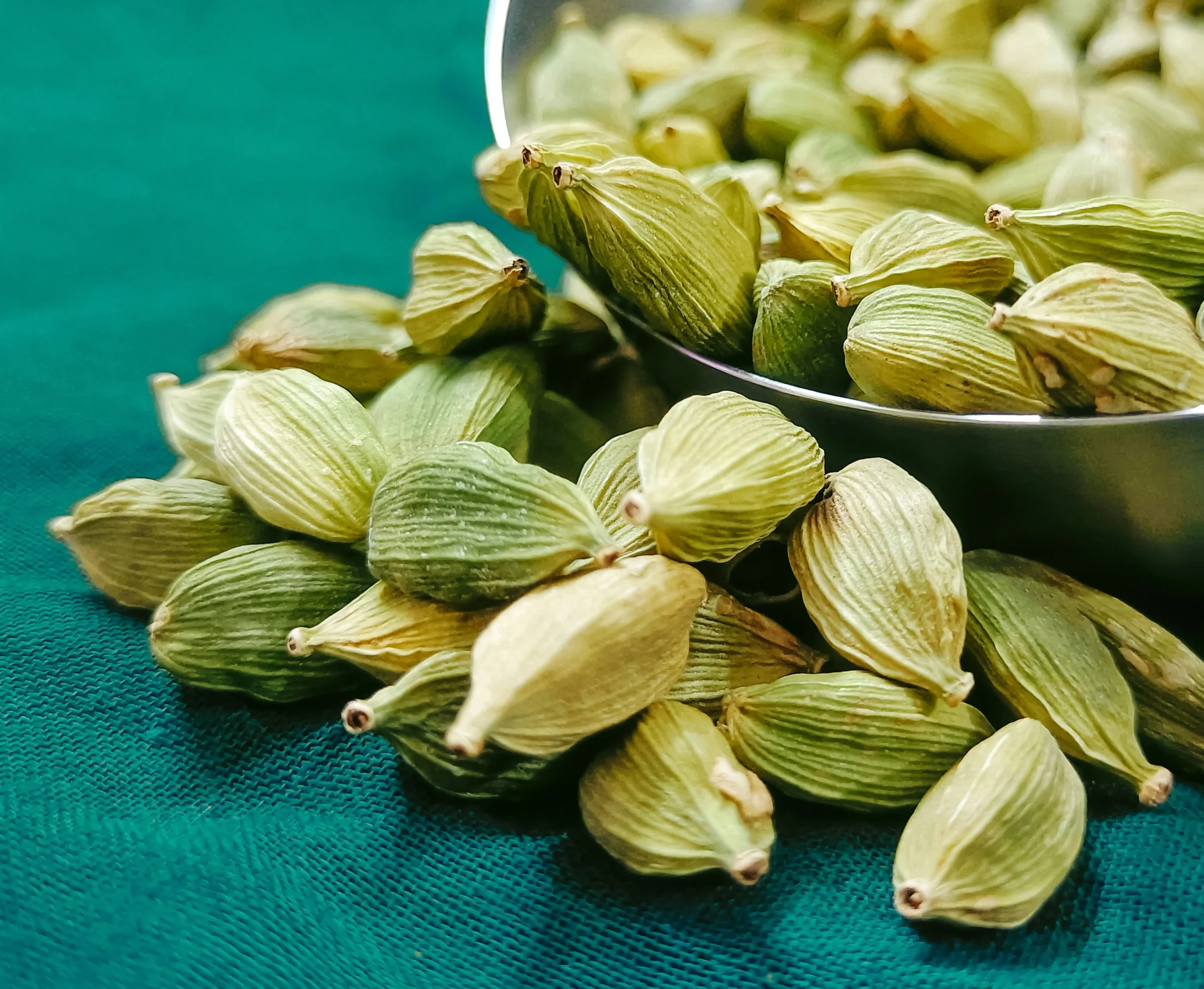Welcome to Kerala Spice Wholesale, your trusted source for premium spices. Today, we delve into the fascinating history of cardamom price in Kerala, a state renowned for producing some of the world’s finest spices. Understanding the price dynamics of cardamom is essential for anyone involved in the spice trade, from farmers to wholesalers and retailers. This article covers the importance of cardamom in Kerala, explores its price history, examines the various cardamom varieties, and identifies the factors influencing its price.
Importance of Cardamom in Kerala
Cardamom, often referred to as the “Queen of Spices,” holds a special place in Kerala’s agricultural landscape. The state’s tropical climate and rich soil conditions make it an ideal region for cultivating this aromatic spice. Cardamom farming provides livelihood to thousands of farmers and plays a crucial role in the local economy. The spice is not only valued for its culinary uses but also for its medicinal properties, making it a significant export commodity.
Understanding Price History
The price history of cardamom in Kerala has seen significant fluctuations over the years. These price changes are influenced by a multitude of factors including seasonal variations, market demand, and government policies. Historical data shows that cardamom prices have experienced periods of both high peaks and sharp declines. By analyzing these trends, stakeholders can better understand the market and make informed decisions.
Cardamom Varieties
Kerala produces several varieties of cardamom, each with unique characteristics that affect its market value. The two primary types are:
1. Malabar Cardamom: Known for its bold size and strong aroma, this variety is highly sought after in both domestic and international markets.
2. Mysore Cardamom: Characterized by its deep green color and larger pods, Mysore cardamom is preferred for its intense flavor.
Factors in Price Determination
Several factors play a role in determining the price of cardamom in Kerala:
1. Production Levels: A good harvest typically leads to lower prices due to increased supply, while poor yields can drive prices up.
2. Weather Conditions: Unfavorable weather, such as excessive rainfall or drought, can adversely affect crop yields and quality, leading to price volatility.
3. Pest and Disease Outbreaks: Infestations can significantly reduce the quantity and quality of the harvest, impacting prices.
4. Labor Costs: The cost of labor involved in the cultivation and harvesting of cardamom also influences its market price.
Seasonal Variations
Cardamom prices in Kerala exhibit distinct seasonal patterns. The spice is usually harvested between October and February, which often results in a price drop due to increased supply. Conversely, prices tend to rise during the off-season when supply is limited. Understanding these seasonal trends is crucial for traders and buyers to optimize their purchasing strategies.
Global Demand
The global demand for cardamom significantly impacts its price. Countries in the Middle East, particularly Saudi Arabia and the UAE, are major consumers of cardamom for their traditional beverages and cuisine. Any changes in international demand, such as increased consumption during festive seasons, can lead to price surges. Additionally, economic conditions and trade policies in importing countries also play a role in determining prices.
Government Policies
Government policies, both domestic and international, influence cardamom prices. Subsidies, import-export regulations, and minimum support prices set by the government can either stabilize or disrupt the market. For instance, export restrictions can lead to an oversupply in the domestic market, causing prices to drop.
Price Index Analysis
Analyzing the price index of cardamom over the years provides valuable insights into market trends. The price index reflects the overall price movement and helps in understanding the long-term patterns and anomalies. By examining the historical price index, stakeholders can predict future price movements and make informed business decisions.
Market Intelligence
Staying updated with market intelligence is crucial for anyone involved in the cardamom trade. This includes monitoring weather forecasts, crop reports, and market news. Access to reliable market intelligence helps traders anticipate changes in the market and adjust their strategies accordingly.
Conclusion
Kerala’s cardamom price history is a testament to the dynamic nature of the spice market. By understanding the various factors that influence prices, from seasonal variations to global demand and government policies, stakeholders can navigate the complexities of the market more effectively. At Kerala Spice Wholesale, we are committed to providing high-quality cardamom and keeping you informed about market trends to help you make the best purchasing decisions.


